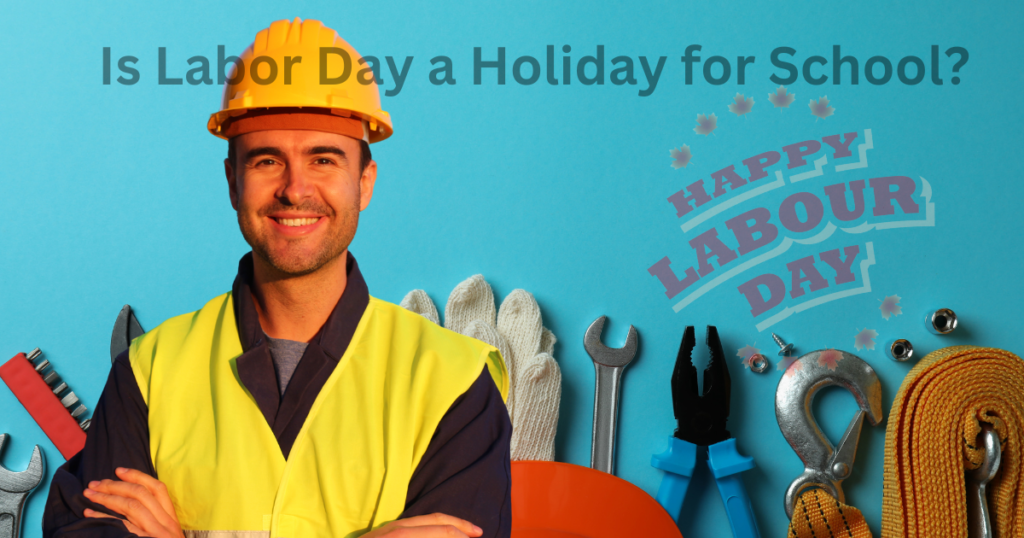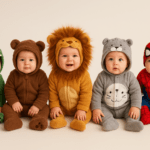Labor Day marks the unofficial end of summer, dedicated to honoring workers’ contributions. For many families, it signifies the last long weekend before the school year kicks into full gear.
But as the holiday approaches, a common question arises: Do kids go to school on Labor Day? Understanding the nuances of school schedules around this holiday is crucial for parents planning activities and managing their family’s time. In this article, we’ll delve into the historical significance of Labor Day, its impact on school calendars across different states, and what parents can expect regarding school closures. Whether you’re a seasoned parent or navigating your child’s first school year, knowing whether schools are open or closed on Labor Day can help you make the most of the holiday, ensuring a smooth transition into the new academic year.
Importance of understanding school schedules on holidays
Understanding school schedules on holidays is essential for parents and guardians as it directly impacts family planning and routine. Holidays like Labor Day often mean school closures, affecting childcare arrangements, work schedules, and family activities. By being aware of these schedules, parents can better prepare for their children’s needs, ensuring they have appropriate supervision and activities planned for days off from school.
Moreover, knowledge of school schedules helps coordinate family events, travel plans, and educational activities. It allows families to make the most of their time together by participating in community events, going on trips, or simply enjoying a relaxing day at home. Additionally, understanding these schedules aids in maintaining a balanced routine for children, preventing disruptions that can affect their academic performance and overall well-being.
Informed parents can also support their children’s education by aligning home activities with school calendars and ensuring that holidays are a time for rest and an opportunity for learning and development.
What is Labor Day?

Labor Day is a federal holiday in the United States celebrated on the first Monday in September. It honors the American labor movement and workers’ contributions to the country’s development and achievements. This day is a tribute to the strength, prosperity, and well-being that workers have brought to the nation. Beyond its historical significance, Labor Day also marks the unofficial end of summer and the beginning of the school year for many.
History of Labor Day

The origins of Labor Day date back to the late 19th century, a period marked by significant industrial growth and labor unrest. The first Labor Day parade was held on September 5, 1882, in New York City, organized by the Central Labor Union. The idea quickly gained momentum, and by 1885, Labor Day celebrations were being held in many industrial centers across the United States.
The labor movement, which fought for fair wages, reasonable working hours, and safer working conditions, was instrumental in establishing Labor Day. In 1894, following a series of labor strikes and the violent Pullman Strike, President Grover Cleveland signed a bill making Labor Day a national holiday. This was part of a broader effort to reconcile with the labor movement and address the concerns of American workers.
Significance of Labor Day
Labor Day holds a significant place in American culture and history. It reminds us of the labor movement’s victories and ongoing struggles for workers’ rights. The holiday recognizes American workers’ social and economic achievements and underscores the workforce’s importance in building the nation’s prosperity.
Beyond its historical and cultural significance, Labor Day has become synonymous with end-of-summer celebrations. It is a time for family gatherings, barbecues, parades, and other festivities. For many, it represents a final opportunity to enjoy summer activities before the onset of autumn and the return to school routines.
When is Labor Day Celebrated?
Labor Day is celebrated on the first Monday in September each year in the United States. This holiday provides a long weekend known as Labor Day Weekend, which many people use to enjoy a final summer break before the start of the school year and the arrival of autumn.
Traditions Associated with Labor Day
Labor Day has evolved into a day of festivities and relaxation, with several traditions that families and communities enjoy across the country:
Parades
Many cities host Labor Day parades featuring floats, bands, and community organizations. These parades celebrate the contributions of workers and the labor movement, often highlighting local unions and their achievements.
Barbecues and Picnics
One of the most popular ways to celebrate Labor Day is barbecues and picnics. Families and friends gather in backyards, parks, and public spaces to grill food, play games, and enjoy each other’s company. This tradition underscores the holiday’s role as a time for rest and recreation.
Fireworks
In some areas, Labor Day is marked with fireworks displays. These shows provide a festive conclusion to the summer season, drawing communities together for a shared celebration.
Travel and Outdoor Activities
Labor Day Weekend is a peak travel time, with many families taking short vacations or day trips. Beaches, lakes, and national parks are common destinations as people look to make the most of the warm weather before fall arrives.
Sports Events
Labor Day also coincides with the start of the college football season and other sporting events. Many fans spend the weekend attending games or watching them on TV, making sports a vital part of the holiday festivities.
Sales and Shopping
Retailers often hold significant sales during Labor Day Weekend, offering discounts on various products. Many people use these sales to shop for items they need for the upcoming season, particularly back-to-school supplies and clothing.
Is Labor Day a Public Holiday?

A public holiday is a designated day set aside by the government to celebrate or commemorate an event of national, cultural, or religious significance. Businesses, government offices, and educational institutions are typically closed on public holidays to allow citizens to observe the occasion. These holidays provide a break from the routine, allowing people to rest, spend time with family and friends, and participate in various celebrations or traditions.
How Public Holidays Affect School Schedules?
Public holidays like Labor Day have a direct impact on school schedules. Here’s how they generally affect the educational calendar:
School Closures
On public holidays, schools are usually closed. Students, teachers, and administrative staff get the day off. These closures are planned well in advance and are included in the academic calendar that schools distribute at the beginning of the year.
Long Weekends
When a public holiday like Labor Day falls on a Monday, it creates a long weekend. This extended break can benefit both students and teachers as it provides additional time for rest, which can reduce stress and improve overall well-being.
Adjustments to the Academic Calendar
Schools often adjust their academic calendars to accommodate public holidays. This may involve starting the school year earlier or later, scheduling makeup days, or extending the school year to meet the required instructional days.
Impact on Lesson Plans
Teachers plan their lesson schedules around public holidays to ensure that important lessons and activities are not disrupted. They may also incorporate themes related to the holiday into their curriculum, using the occasion as a teaching opportunity.
Parental Planning
Knowing the school schedule around public holidays is crucial for parents when planning family activities, vacations, and childcare. Public holidays allow families to spend quality time together, participate in holiday-related activities, and engage in cultural or community events.
Extracurricular Activities
Public holidays can also affect the schedule of extracurricular activities, such as sports practices, club meetings, and school events. These activities are often paused or rescheduled to accommodate the holiday.
What Labor Day Means to Kids?
Labor Day holds different meanings for children, depending on their age and understanding. For younger kids, it may simply signify a day off from school—a chance to play, relax, and spend time with family before the school year begins. They might associate it with picnics, barbecues, and outdoor activities that mark the end of summer.
As children grow older, Labor Day becomes an opportunity to learn about its history and significance. They may begin to understand that Labor Day honors the contributions of workers and the labor movement in achieving fair wages, safer working conditions, and other rights that benefit their families and communities.
Moreover, Labor Day can inspire discussions about careers and aspirations. Children may learn about different types of jobs and the importance of hard work and dedication. It can spark curiosity about the world of work and the roles people play in society, laying the groundwork for future educational and career choices.
Do Kids Go to School on Labor Day?

No, kids do not go to school on Labor Day. Labor Day is a federal holiday in the United States, celebrated on the first Monday in September. This day is dedicated to honoring the contributions of American workers and providing them with a well-deserved break. Consequently, schools, many businesses, and government offices are typically closed to observe the holiday.
Labor Day marks a valuable pause in the academic calendar for students and their families. It offers a long weekend at the end of summer, often seen as a final opportunity for relaxation and family gatherings before the busy school year fully resumes. Many families take advantage of this break to engage in outdoor activities, travel, or enjoy downtime together.
Labor Day Across Different States
Labor Day is a federal holiday celebrated nationwide in the United States, but its observance and associated traditions can vary slightly from state to state.
Variations in Observance
While Labor Day is universally recognized on the first Monday of September, how it is celebrated can differ depending on regional customs and local culture. In some states, there are large parades and festivals; in others, the holiday might be marked by smaller community events or family gatherings. Coastal states might see a surge in beach activities, while states with extensive parks and natural landscapes might see families heading out for picnics and hiking trips.
State-Specific School Policies
Despite Labor Day being a national holiday, school calendars can differ slightly from one state to another due to varying local policies and educational requirements. Here’s how:
School Start Dates
In some states, the school year begins before Labor Day; in others, it starts after the holiday. This difference can impact how families plan their end-of-summer activities and back-to-school preparations. States like Michigan have policies that mandate schools to begin after Labor Day to boost late-summer tourism.
Additional Local Holidays
Certain states may have additional holidays that influence their school schedules. For example, states with significant populations from specific cultural or religious backgrounds might observe additional holidays that others do not, leading to slight variations in the academic calendar.
Community Events
Many states have unique Labor Day traditions that involve local schools. For instance, some schools participate in community parades, fairs, or other public events celebrating workers’ contributions. These events can enhance the community and give students a deeper understanding of the holiday’s significance.
Weather Influences
Weather can also affect how Labor Day is celebrated across different states. The weather might already be cooling down in northern states, leading to more indoor activities. In contrast, southern states may still be experiencing summer heat, making water-related activities more popular.
Why do Schools close on Labor Day?
Schools close on Labor Day to honor the holiday’s significance and give students, teachers, and staff a well-deserved break. Labor Day, celebrated on the first Monday in September, is a federal holiday dedicated to recognizing the contributions of American workers and the labor movement. This day is a tribute to the achievements and hard work that have propelled the nation forward.
For schools, closing on Labor Day serves several important purposes:
Respect for Workers: Labor Day celebrates the achievements of the labor movement, which fought for fair wages, reasonable working hours, and better working conditions. By closing schools, the education system respects these historic accomplishments and acknowledges the ongoing contributions of workers, including teachers and school staff.
Family Time: Closing schools on Labor Day allows families to spend quality time together. It provides a long weekend for relaxation, travel, and participation in various leisure activities, strengthening family bonds before the busy school year fully kicks in.
Rest and Recuperation: A day off offers students and educators a chance to rest and recuperate. This break can help reduce stress, improve mental health, and enhance overall well-being, leading to a more productive and focused return to school.
Cultural Significance: Observing Labor Day is part of a broader cultural tradition. By recognizing this holiday, schools help students understand and appreciate labor’s historical and social importance in shaping the country.
How Does Labor Day Affect the Start of the School Year?
Labor Day, which falls on the first Monday in September, often marks a significant point in the academic calendar and can affect the start of the school year in several ways.
Firstly, Labor Day is a natural divider between summer break and the beginning of classes. Many schools across the United States choose to commence their academic year either just before or immediately after Labor Day. This timing allows families to enjoy one last long weekend together before students return to their studies.
Secondly, the holiday allows educators and school administrators to finalize preparations for the new school year. Teachers often use this extended weekend for last-minute classroom setup, curriculum planning, and professional development sessions.
Moreover, Labor Day’s position on the calendar can influence the length of summer vacation. Schools that start before Labor Day may have a shorter summer break, while those that begin after the holiday extend summer vacation until September.
The Importance of Holidays in Education
Benefits of Breaks for Students
Holidays play a crucial role in education by providing breaks that offer numerous benefits for students:
1. Mental and Physical Refreshment: Breaks such as Labor Day give students much-needed time to relax and recharge. This mental and physical refreshment helps reduce stress and fatigue, improving overall well-being.
2. Enhancing Focus and Productivity: Time away from school allows students to reset mentally, improving focus and productivity when they return to their studies. It prevents burnout and supports better concentration in the classroom.
3. Family Time and Bonding: Holidays often coincide with family opportunities to spend quality time together. This strengthens family bonds and provides emotional support, contributing to a supportive home environment crucial for academic success.
4. Exploration and Enrichment: Students can use holiday breaks to explore new interests, engage in extracurricular activities, or pursue hobbies. This enrichment outside the classroom fosters creativity, critical thinking, and lifelong learning.
Impact on Learning and Development
Holidays impact learning and development in several significant ways:
1. Reflection and Integration: Breaks allow students to reflect on what they’ve learned and integrate new knowledge. This reflection enhances understanding and retention of academic material.
2. Social and Emotional Growth: Time away from school promotes social interaction with peers and adults outside the academic setting. It helps develop communication skills, empathy, and resilience.
3. Cultural Awareness: Holidays often carry cultural or historical significance, providing opportunities for students to learn about diverse traditions, values, and perspectives. This broadens their world understanding and fosters tolerance and respect for others.
4. Balance and Well-Rounded Education: By incorporating breaks into the academic calendar, schools promote a balanced education approach that values academic achievement and holistic development. This balance supports students in becoming well-rounded individuals equipped for future success.
Comparing Labor Day to Other Holidays
How Other Holidays Affect School Schedules
1. Thanksgiving: Thanksgiving is typically observed with a multi-day break, allowing students and families time to celebrate, travel, and give thanks. Schools often close for several days around Thanksgiving to accommodate travel and family gatherings.
2. Winter Break (Christmas/New Year): Winter break is a more extended holiday period, ranging from one to three weeks, depending on the school district. It coincides with Christmas and New Year celebrations, providing students and staff with extended time off to celebrate, rest, and prepare for the new year.
3. Spring Break: Spring break varies by region but generally provides students with a week-long spring semester break. It offers an opportunity for travel, relaxation, and participation in recreational activities, rejuvenating students before the final stretch of the academic year.
4. Memorial Day, observed in late May, honors military personnel who died in service to the United States. It typically results in a three-day weekend, although schools may also use it as a time for educational activities related to patriotism and remembrance.
Similarities and Differences
Similarities:
- Break from Routine: Like Labor Day, these holidays provide breaks from the regular school routine, allowing students and staff to recharge and engage in non-academic activities.
- Family Time: They often involve opportunities for families to spend quality time together, fostering social and emotional well-being.
- Cultural Significance: Each holiday carries cultural or historical significance, providing opportunities for learning beyond the classroom.
Differences:
- Length of Break: Holidays like Thanksgiving, Winter Break, and Spring Break typically offer more extended periods than the single day off provided by Labor Day.
- Focus of Celebration: Labor Day explicitly honors the contributions of workers and the labor movement, while other holidays may focus on different themes such as gratitude (Thanksgiving), religious celebrations (Christmas), or national remembrance (Memorial Day).
- Impact on Academic Calendar: Some holidays, like Winter Break and Spring Break, mark significant pauses in the academic year, influencing school schedules and curriculum planning more profoundly than Labor Day.
Read our post Also: Should Kids Attend School During a Solar Eclipse? Exploring Safety and Education
FAQ
What is the significance of Labor Day?
Labor Day honors the contributions of American workers and the labor movement to the country’s development and prosperity.
Do schools and businesses close on Labor Day?
Yes, Labor Day is a federal holiday, so most schools, businesses, and government offices are closed to observe the holiday.
Why do we celebrate Labor Day?
Labor Day celebrates the achievements of workers and the labor movement in securing better working conditions, fair wages, and labor rights.
What traditions are associated with Labor Day?
Traditions include parades, picnics, barbecues, and other outdoor activities that mark the unofficial end of summer.
How can families celebrate Labor Day?
Families can celebrate Labor Day by participating in community events, enjoying outdoor activities, or spending quality time together.
Conclusion
In conclusion, Labor Day is more than just a day off—it’s a time to reflect on workers’ hard work and contributions throughout American history. It marks the achievements of the labor movement in advocating for better working conditions and rights. For families, it’s a chance to come together, enjoy each other’s company, and appreciate the opportunities that labor advancements have brought. Whether through parades, picnics, or quiet moments of reflection, Labor Day reminds us of the importance of honoring laborers past and present. It serves as a reminder of the ongoing pursuit of fairness and dignity in the workplace and society.















